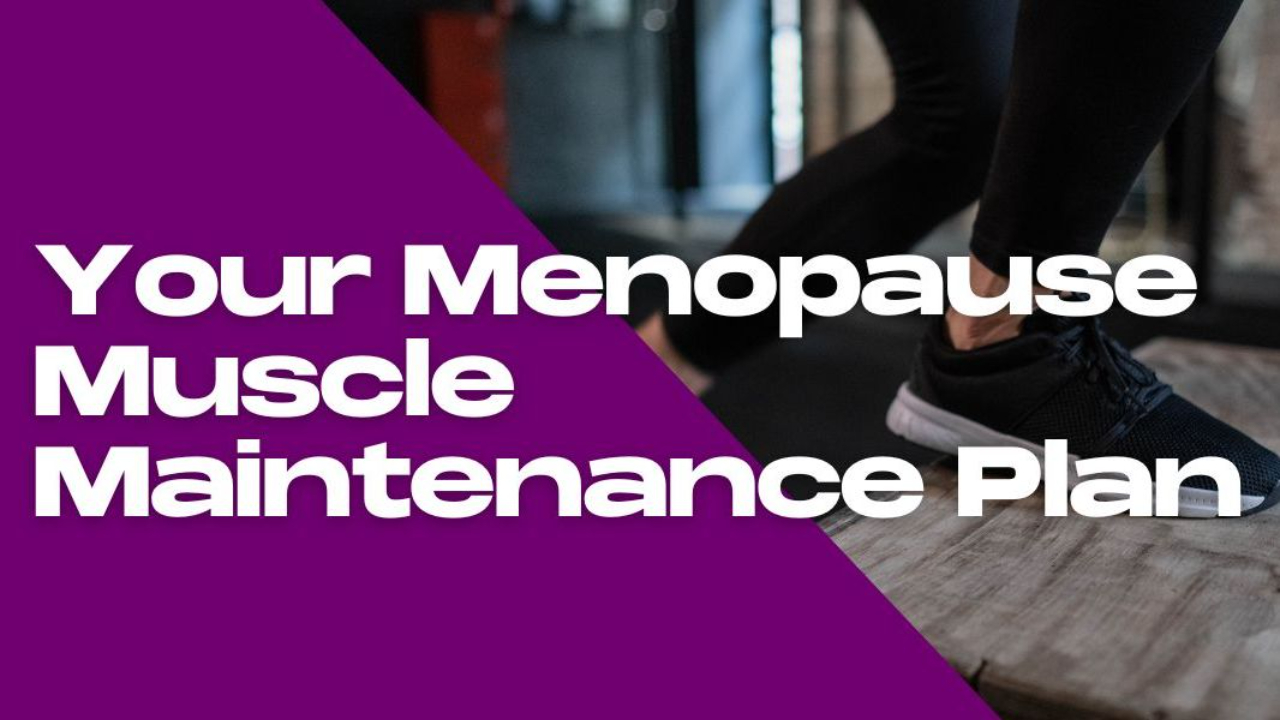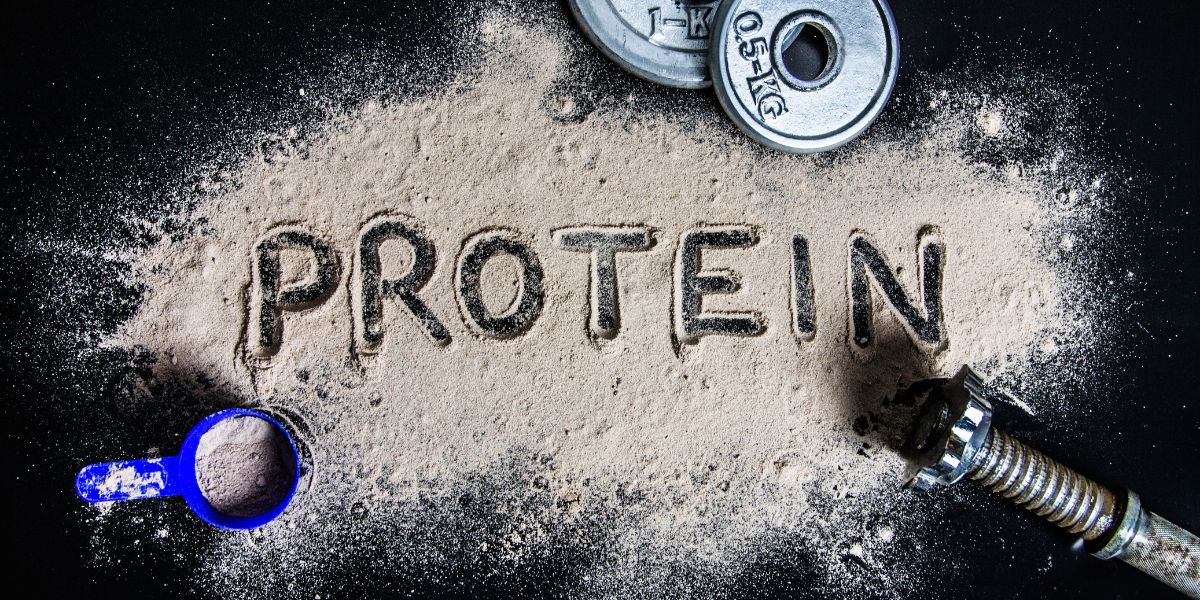
Your Menopause Muscle Maintenance Plan
May 30, 2023It’s harder to make and maintain muscle in midlife and menopause. Here’s what can help.
By Selene Yeager
We talk about muscle a lot here at Feisty Menopause. Your muscle mass not only helps you run, jump, ski, hike, clean and jerk, surf, cycle, and otherwise keep enjoying the sports and activities you love, but also in the long run your muscle is what is going to keep you strong, vital, and independent in your old age. And unless you start a serious muscle maintenance plan when you hit this time of life, you risk running low by the time you get there.
Research shows you can lose 10% of muscle mass during perimenopause alone, and late perimenopausal and postmenopausal women are overwhelmingly more likely to have sarcopenia (involuntary muscle loss) than premenopausal or early perimenopausal women. Muscle protein synthesis—your ability to make and maintain muscle—also slows down during midlife and menopause. So, we need to make a concerted effort to stay strong.
With that, here is your Feisty Menopause muscle maintenance plan. The plan includes the fundamentals, along with some bonus elements to consider. What matters most is that you nail down the basics and stay consistent.
The Fundamentals
These are the muscle-making and maintenance elements that should be a regular part of your life.
Resistance Training
This one is non-negotiable. If you want to make muscle, you need to strength train. This is especially true once you hit the menopause transition. One of the reasons that women lose muscle in menopause is because estrogen helps regulate the function of what are called our satellite cells (aka our muscle stem cells), which help us maintain our muscle. The hormonal effects are so strong that a 2019 study showed that when researchers removed estrogen from mice, their muscle stem cells dropped by 30 to 60 percent. That study included a collaboration with scientists in Finland who performed muscle biopsies in women shortly before and after the transition to menopause. Those researchers found the number of satellite cells correlated strongly with changing serum estrogen levels. Resistance training, especially heavy lifting, is the best way to generate those muscle-making cells.
For the greatest strength-building stimulus, work up to doing big lifts like squats, bench presses, and deadlifts at heavy weight (i.e., 3 to 5 sets of 6 or fewer reps). Include strength training 2 to 3 days a week. If you’re new to strength training, work with a trainer to learn proper technique and progression. (You can find our free Feisty Menopause Beginner’s Guide to Strength Training here)

Dietary Protein
We can develop more “anabolic resistance” with age and during menopause, meaning that our muscles become less sensitive to protein. That’s why it’s especially important to strength train and to eat enough protein throughout the day to stimulate that muscle-making anabolic response. Importantly, you don’t store protein like you store carbohydrates and you can only synthesize so much at one time, so you really need to spread it out throughout the day. “The goal is to have 25 to 30 grams of protein three or four times a day coupled with strength training to help you maintain your muscle, which is crucial for health and well-being across the board,” explained Heidi Skolnik, CDN, of Nutrition Conditioning, LLC, and co-author of The Whole Body Reset during Hit Play Not Pause episode 103. It’s especially important to get protein in the morning, she says. “You need to hit 25 grams of protein in the morning to press that anabolic, muscle-building button.”
Sprint and/or Plyometric Training
Research shows that sprint interval training (SIT)—that is short, high-intensity intervals like Tabatas—helps build muscle and improve body composition in postmenopausal women. SIT works by jump-starting fast-twitch muscle fiber recruitment. Those are the powerful, snappy fibers that generally sit by the sidelines during endurance activity. They’re also the first to go with age and during the menopause transition.
Plyometric training, including jumping, hopping, and bounding is also a good muscle-building stimulus, especially in the lower body. A 2019 review that included 289 older adults (176 of whom were women), ranging in age from 58 to 79 found that regular plyometric training improved bone health, muscular strength, body composition, postural stability, and physical performance. We talk all about plyometrics and getting started in this blog on plyometrics.
Aim to include these types of training in your routine twice a week (you can do them on resistance training days).
A Muscle-Protective Diet
Add muscle mass to the list of reasons to eat a Mediterranean-style diet, which is one that is high in vegetables, fruits, whole grains, and monounsaturated fat/omega-3 fatty acids and low in ultra-processed foods and saturated fat. Research shows that this pattern of eating reduces oxidative stress, inflammation, and insulin resistance, all of which can hinder muscle development, and that the components of a Mediterranean diet have been associated with better muscle measurements in postmenopausal women. Research presented at the Endocrine Society’s 100th Annual meeting found that a higher Mediterranean diet score (MDS), meaning better adherence to the Mediterranean diet, was significantly associated with both greater muscle mass and higher bone mineral density measured at the lumbar spine in postmenopausal women. (Note: If you don’t eat a diet high in omega-3 fatty acid-rich foods like fatty fish, it’s worth supplementing omega-3s; research shows that omega-3s have the potential to improve body composition in postmenopausal women.)
Vitamin D
Vitamin D is essential for muscle function. Research shows that Low vitamin D status is very common in postmenopausal women, and that correcting vitamin D deficits in postmenopausal women can help boost their muscle mass. It’s generally recommended that postmenopausal women consume 800 IUs of vitamin D a day. Fatty fish, fortified foods, and egg yolks are good sources. You get vitamin D from the sun. You can also take a vitamin D supplement for insurance.
Bonus Elements
Once you have the fundamentals in place, you can consider some additional elements.
Creatine
Creatine, which has been used for decades in bodybuilding circles, is certainly having its moment right now, especially among menopausal women. Creatine is a naturally occurring substance found in your muscle cells that helps them produce energy during high-intensity exercise and heavy lifting. As women, our muscle creatine stores tend to be 70 to 80 percent lower than our male counterparts. Research finds that creatine supplementation can help counteract the menopause-related decline in muscle, bone, and strength by reducing inflammation, oxidative stress, and serum markers of bone resorption, while also resulting in an increase in bone formation. It can help increase strength, power, and athletic performance in females. It may also be good for your brain health and maybe even your mood. A recent study on older (average age 68), untrained women and men found that those who used creatine in addition to strength training doubled the amount of strength gained from a 10-week resistance training program compared to those not using creatine. The recommended maintenance dose is about 2.5 to 5 grams per day (you’ll see 3 to 5 grams cited most often).
Creatine has been studied for decades and is largely considered safe. Creatine supplementation can increase blood creatinine levels in lab tests, but, as noted in this review on Examine.com “Although taking creatine may increase creatinine levels, long- and short-term studies have found that creatine doses ≤10g/day don’t impair kidney health in people with healthy kidneys.” If you have existing kidney issues, lower doses appear safe in short term studies, but it’s best to consult with your doctor. There has also been some concern that creatine supplementation may increase allergen-induced asthma. Further research has found that low to moderate intensity aerobic exercise causes anti-allergic effects in the lungs and appears to override these allergen-sensitizing effects. But it’s good to make note if you have these existing airway issues.
Blood Flow Restricted Resistance Exercise
File this one as one to watch as a potential way to get further muscular gains from your training time. In Hit Play Not Pause episode 26, elite rock climbers Nancy Feagin and Maggie Odette talked about using blood flow restriction (BFR) training (specifically under Dr. Tyler Nelson) to build strength without the time, stress, and recovery time of heavy training.
BFR training works by using pressure cuffs to reduce circulation of oxygenated blood to your working muscles while training at low intensity so your body is forced to make adaptations that you would usually need to work much longer and harder to achieve. This type of training has been used for recovery for years. By intermittently blocking blood flow, even if you’re laid up, you can stimulate metabolic strength and fitness adaptations, so you can prevent muscle atrophy. Some elite athletes like Olympians will also incorporate BFR training into their routines so they can squeeze out marginal gains above and beyond the adaptations from conventional training alone. Now researchers are experimenting with BFR training to counteract age-related muscle loss.
A study published in April found that six weeks of low-load BFR resistance exercise—using weights just 30 percent of each person’s maximum strength—significantly increased muscle strength and endurance, as well as increases in both slow and fast-twitch muscle fiber size in a group of adults ages 56 to 75.
The downsides are that it’s pretty uncomfortable and not readily accessible to most people. But it’s definitely growing in popularity, so will likely become more widely available. It could end up being a helpful supplemental training tool, especially with age.
A Note on Hormone Therapy
Since hormone decline is one of the factors that accelerates muscle loss, it seems logical that menopausal hormone therapy would stem that loss. And some research does indeed show improved muscle mass, strength, and function in older women taking hormone therapy. What’s less clear is if those benefits are above and beyond what they would get through resistance training.
A 2022 literature review reported that hormone therapy didn’t provide any additional beneficial effect on body composition in active postmenopausal women. Physically active women had greater total fat free mass, appendicular (i.e., arms and legs) fat free mass, and muscle mass index compared to less active women, and hormone therapy didn’t show any additional effect on fat free mass. That said, if your symptoms are disrupting your life and ability to stay consistent in your training and workout routines, hormone therapy to resolve those symptoms would absolutely be beneficial. If you feel better on your hormone therapy, you’ll move more and make more muscle.
Importantly, hormone therapy doesn’t appear to increase protein synthesis. So even if you’re on hormone therapy, you still need your protein.
Get Feisty 40+ in Your Inbox
We hate SPAM. We will never sell your information, for any reason or send you emails that suck!

